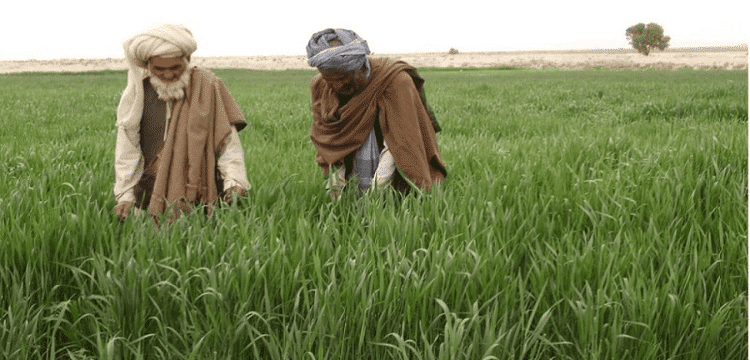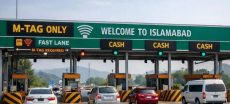[vc_row][vc_column][vc_column_text dp_text_size=”size-4″]In April 2021, the federal government announced the Kisaan Card Programme to deliver agricultural subsidies on pesticides and fertilisers to up to 5 million farmers directly and to provide speedy aid during disasters.
It was introduced as part of the Rs. 300 billion Agriculture Emergency Programme, which included direct subsidies at Rs. 17 billion.
Most farmer organisations and commentators applauded the move, expecting that it would ultimately solve the agriculture subsidy regime by removing bureaucratic red tape and corruption.
According to official data, 1.28 million farmers have been registered across 36 districts, with Rs. 10.8 billion in DAP fertiliser subsidies supplied to 970,882 farmers alone. Furthermore, farmers have received subsidies for other phosphate fertilisers (SSP, NP) and potash for Rs. 219 million and Rs. 441 million, respectively.
Subsidies, particularly on fertilisers, were previously given to fertiliser firms, with farmers rarely reaping the full advantages, but difficulties arose almost immediately after the debut.
Farmers had to collect signatures from patwaris and attend the district office to register for the Kisaan Card at first, but this was eventually solved when the department began allocating Kisaan registration targets to its staff.
Farmers formerly had to obtain subsidies from their local Konnect shop, but the Ksiaan card facilitated direct transmission of this money to their bank accounts. Tokens were hidden in the fertiliser bag closures or the pesticide container tops. Farmers would receive a confirmation message after sending the token number to 8070.
When everything was just getting started, the government decided to deploy biometric machines to large fertiliser dealers and route subsidies through them. Farmers who were already complaining about missing or spent subsidy tokens in bags began claiming that dealers routinely pocketed the subsidies, despite the government’s promises that the system was impenetrable to corruption.
Also Read: People should avoid living in these high-risk areas to avoid COVID-19-like pandemics.
The Punjab Government’s Agriculture 2.0 Programme took a comprehensive approach, with the Kisaan Card being one of several initiatives. It provided subsidies for fertilisers, seeds, and other agricultural inputs, as well as credit and insurance,” explained Dr. Ahmad Mahmood, Assistant Professor at MNS-University of Agriculture, Multan (MNSUAM).
“However, since the change of government, there have been changes to the programme.” On the ground, farmers are not receiving any assistance and are concerned about the card’s future,” he continued.
He stated that funding has been restricted, coverage has been limited, and there have been numerous cases of manipulation, but the largest issue is a lack of knowledge.
This Rabi Season, the government has only issued Kisaan Card subsidies on wheat seed, but the farmers we spoke with have yet to get them. Another issue in the system is that farmers frequently have to wait the entire crop season to obtain subsidies, rendering the entire procedure ineffective.
Furthermore, Kisaan Card failed to deliver the broad coverage and real transparency that it promised, and even at its finest, the financial help offered was manifestly insufficient. At the lower levels, there were several claims of favouritism and corruption. It must do much more to gain farmers’ trust and ensure its long-term viability.
Kisaan Card is undeniably a beginning in the right path with enormous potential, but it requires considerable improvements. It must cover the provision of repairing and maintaining the complete agricultural infrastructure. There is an urgent need for easy access to credit and smart irrigation systems, which Kisaan Card may be able to deliver.
“Kissan Card certainly addresses a few issues, but lack of support for mechanisation, disaster preparedness, and climate resilience can also be included,” Mahmood remarked.
He emphasised the importance of soil and water conservation, solarization or renewable energy, climate change mitigation in relation to climate financing, and combatting desertification as a few other challenges that must be addressed.
He advocated that financing be maintained regardless of government changes, that ICT-based assessments be used to reduce corruption and exploitation, that parallel credit schemes be implemented, and that integrated agricultural choices be supported through the Kisaan Card Programme to improve its efficacy.
By prioritising main grain crops above the rest, the project also overlooked the long-term viability and resilience of farming communities. The government must ensure that crop diversity is encouraged through this project so that farmers can cope with the coming risks of climate change.
The government is currently providing no help for post-harvest management. Every year, post-harvest losses devastate our agricultural output and farmers’ income.
This plan should help farmers with storage, processing, and access to high-value markets in order to provide value and effect meaningful change.[/vc_column_text][/vc_column][/vc_row]











